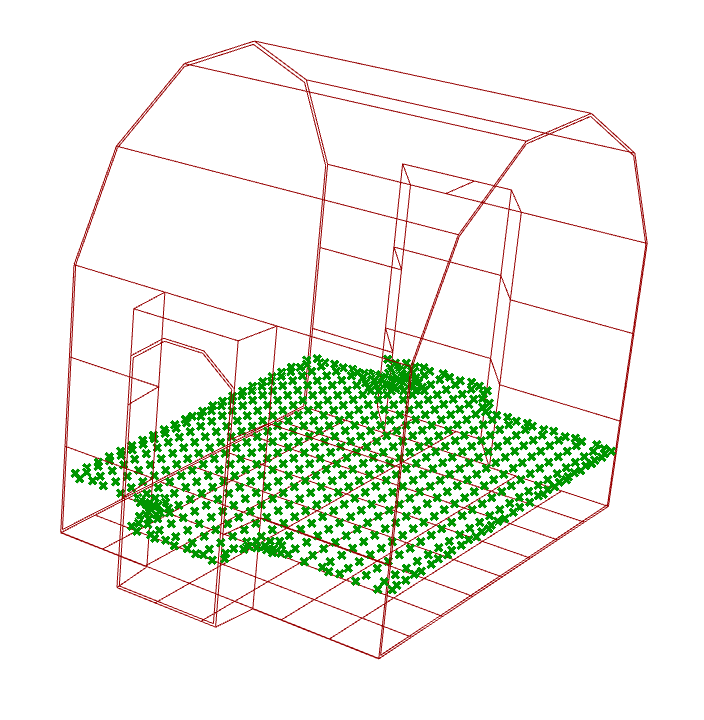@LanceMonfort
Apologies for my late response. To answer your question:
Technically you are defining 100 a, e, and A (thermal absorptance, emittance, and area) values, since they are specified per surface. You define them when assigning a HB Material to a HB Surface. Typically the surface a = e at the same temperature so you only need to assign one. Obviously if the surfaces are of the same material, you only need to define its thermal absorptance once.
EnergyPlus provides a single measurement of surface temperature per surface, per simulation time. So if you are getting hourly results from your EP simulation, an annual simulation with 8760 hours will result in a 100 x 8760 Tsrf matrix (or 876,000 values in total).
So where do the 500 test points come in? They will vary per surface view factor f (the second part of the equation in my previous post). This is where things get complicated. Each test point has a unique f calculated to all other surfaces in the scene. So if you have 100 surfaces with 1 test point, then each surface must calculate 99 view factors to describe it’s relationship to the other surfaces, or 100 x 99 f values in total. Assuming the 500 test points still just represents one surface with approximately equal temperature (and not 500 subsurface patches), this means each test point must compute 99 view factors, or 500 x 99 x 100 view factors in total. Simplifying 99 to 100 for cleaner math, that gives us 5,000,000 view factors (assuming I didn’t mess up my math anywhere). Luckily this won’t change per time step and only has to be calculated once.
The result sums the 99 other view factors to a single value, so the resulting Qrt value is, as you say, 50,000 points per time step, or a 50,000 x 8760 matrix.
Anyway, the good news you don’t have to do these calculations manually. Its good to get a sense of the underlying theory and intuition for why increasing the number of test points scales computation time quadratically, but in terms of application, LB will do the complicated stuff.
Here’s an (HB Legacy) example that loads surface temperatures from EP, and multiplies it with view factors per test point for a given surface. In this particular case the output is mean radiant temperature (MRT), which is not exactly what you are asking, but is in fact related, and the workflow illustrates the view factor/EP surface temp workflow you need. There is an equivalent (and much improved) version of this with the latest HB, but I don’t have time to search it out now. I’ll try and get back to this discussion when I have more time if you can’t locate it.
